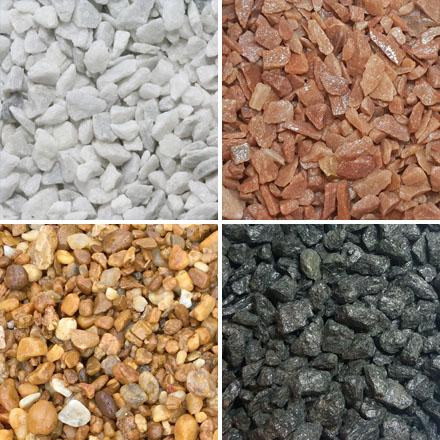The aggregate is generally regarded as an inert filler, which makes up 60 to 80% by weight of the concrete volume and 70 to 85% by weight. The unit is divided into two different types: rough and fine. Coarse aggregates are usually larger than 4.75 mm, while fine aggregates are smaller than 4.75 mm. The compressive strength of the unit is an important factor when selecting the unit.
Gravel creates more edges and elongated aggregates that have a higher surface to volume ratio and better binding properties, but require more cement slurry to make a usable mix. You can find the best material on building supplies online.

Certain properties of aggregates can influence the material goods of the resulting concrete mix. These are as follows.
- Composition
It is forbidden to use aggregates made from materials that react with alkali in cement and cause excessive expansion, cracking and deterioration of the concrete. The unit must therefore be tested to determine whether such components are present in the unit.
- Size and shape
The size and shape of the aggregate particles strongly influences the amount of cement that is required in the concrete mix, which ultimately affects the economic efficiency of the concrete. The largest feasible unit should be used for the production of economical concrete. Laker Builders Merchant offers all types of size and shapes.
Remember that the size and shape of aggregate particles have a greater impact on fresh concrete performance than hardened concrete.
- Surface texture
The development of the hard bond strength between the aggregate particles and the cement slurry depends on the surface texture, the surface roughness and the surface porosity of the aggregate particles.
If the surface is rough but porous, it creates maximum adhesive strength. In porous surface aggregates, the adhesive strength increases due to the hardening of the cement slurry in the pores.
- Specific weight
The ratio of the weight of the oven dried aggregate maintained at a temperature of 100 to 1100 ° C for 24 hours to the weight of the equivalent volume of water replaced by the saturated dry surface aggregate is referred to as the specific gravity of the aggregate.
The specific weight is a means of determining the applicability of aggregates. A low specific gravity usually indicates porous, weak and absorbent materials, while a high specific gravity indicates good quality materials.
- Bulk density
It is defined as the weight of the unit that is required to fill a unit volume container. Usually expressed in kilograms per liter.
- Porosity and absorption
Because of bubbles, the tiny pores that form in the rock when the molten magma solidifies are called pores. Pore-containing rocks are called porous rocks.
Water absorption can be defined as the difference between the weight of a very dry aggregate and the weight of a saturated aggregate under dry surface conditions.
- Depending on the moisture content in the unit, it can exist under any of the four conditions.
- The unit is very dry (no moisture)
- Dry aggregate (some moisture in the pores)
- Saturated aggregate with a dry surface (the pores are completely filled with water, but no water on the surface)
- Wet or moist aggregates.
It can be defined that under wet conditions the total volume of a certain amount of sand (i.e. a fine aggregate) is increased compared to the volume of the same amount of dry or fully saturated sand. The ratio of the volume of wet sand to the volume of dry sand is called the expansion coefficient.
When water is added to dry and loose sand, a thin film of water forms around the sand particles. Because of the surface tension, the airlock between the sand particles and the water film tends to push the particles away, increasing the volume.
- Financial module
The fineness modulus is an empirical factor obtained by adding and dividing the cumulative percentage of the aggregate remaining on each standard sieve in the range of 80 mm to 150 microns and dividing by 100.
The fineness module is normally used to understand the thickness of the aggregate. A larger value of the fineness module indicates a coarser aggregate, and a smaller value of the fineness module indicates a finer aggregate.
- The specific surface of the unit
The surface area per unit weight of a material is called the specific surface area. This is an indirect measure of the overall grade. The specific surface area increases with the decreasing size of the aggregated particles.